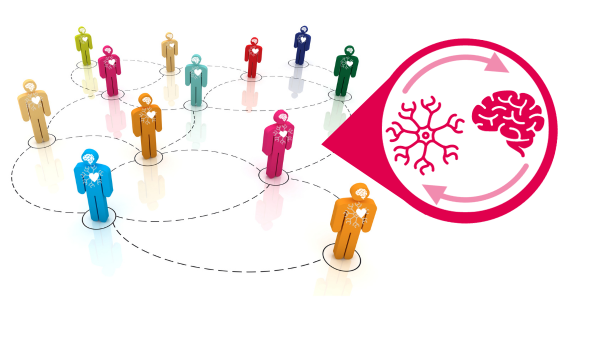Chapter 1: The Brain and Body in Conflict
 This eBook focuses on neuroscience and three branches of psychology: social psychology, personality psychology and cognitive psychology. These fields of study are particularly useful in enhancing our understanding of how the human mind, brain and body functions contribute to the occurrence and development of conflict, including at the intrapersonal, interpersonal and intergroup levels, as well as its management and/or resolution.
This eBook focuses on neuroscience and three branches of psychology: social psychology, personality psychology and cognitive psychology. These fields of study are particularly useful in enhancing our understanding of how the human mind, brain and body functions contribute to the occurrence and development of conflict, including at the intrapersonal, interpersonal and intergroup levels, as well as its management and/or resolution.
This first chapter will focus on the foundations of neuroscience and introduce you to major brain structures and body functions that are involved in/affected by the experience of conflict. For example, multiple brain regions and physiological processes are involved when people experience conflict-typical emotions like anger, sadness and fear. Furthermore, in conflict resolution processes like mediation, people are frequently expected to use high-level cognitive skills, including verbalising their conflict experience, processing and considering the other conflict party’s perspective, negotiating disputed issues that they feel strongly about, and making decisions for themselves and perhaps for others.
Understanding the brain and body functions of people in conflict will help us analyse why people experience conflict, why they behave in the way they do when they are in conflict and how practitioners (or other professionals) can best support people in conflict. To deepen our insights into this topic, we need to understand first at a basic level how our brain and body work, and which major brain structures are involved in the cognitions and emotions typically involved in or affected by conflict. This foundational knowledge will prepare and help you make sense of the readings to which you will be introduced throughout this eBook. For example, in topic six of this chapter, we will consider some readings that discuss the implications of neuroscience findings for conflict analysis and conflict resolution processes like mediation.
Learning Outcomes
- explain the relevance of neuroscience and psychology for conflict management
- identify, distinguish and explain important brain areas and functions, as well as physiological processes that are relevant to the experience of conflict and conflict resolution
- explore how the brain and body are affected by and involved in the experience of conflict
- consider how neuroscience can inform and support conflict analysis, management and resolution
Key Readings
Bruneau, E. (2015). Putting neuroscience to work for peace. In E. Halperin & K. Sharvit (Eds.), The social psychology of intractable conflicts (pp. 143-155). Springer International Publishing. https://doi.org/10.1007/978-3-319-17861-5_11
Burgess, G. (2022, February 3, 2022). Reflections on neuroscience, conflict, and peacebuilding. https://www.beyondintractability.org/cci-mbi-cv19-blog/gburgess-neuroscience
Fitzduff, M. (2021). Our brains at war: The neuroscience of conflict and peacebuilding. Oxford University Press. https://doi.org/10.1093/oso/9780197512654.001.0001
Rock, D. & Cox, C. (2012). Scarf® in 2012: Updating the social neuroscience of collaborating with others. Neuroleadership Journal(4), 1-14.

